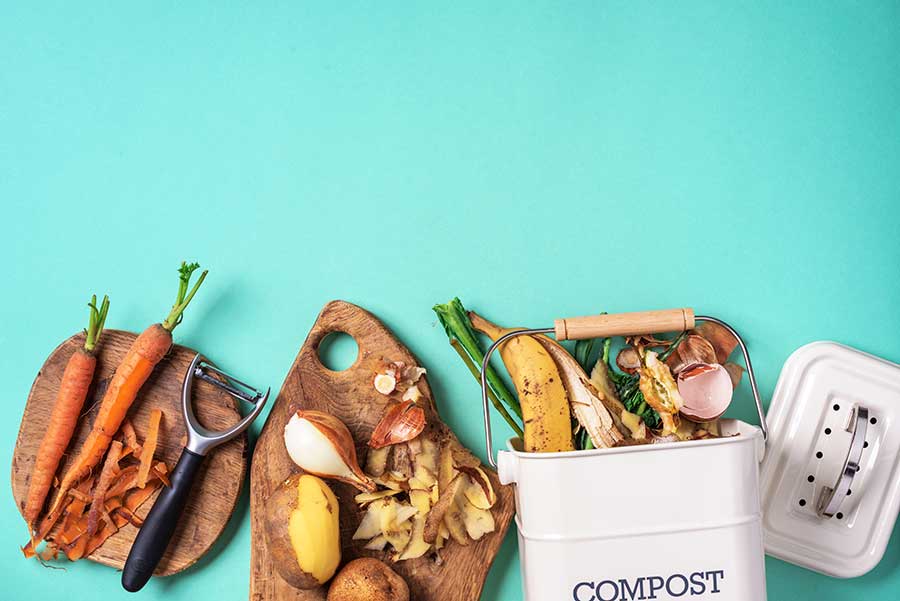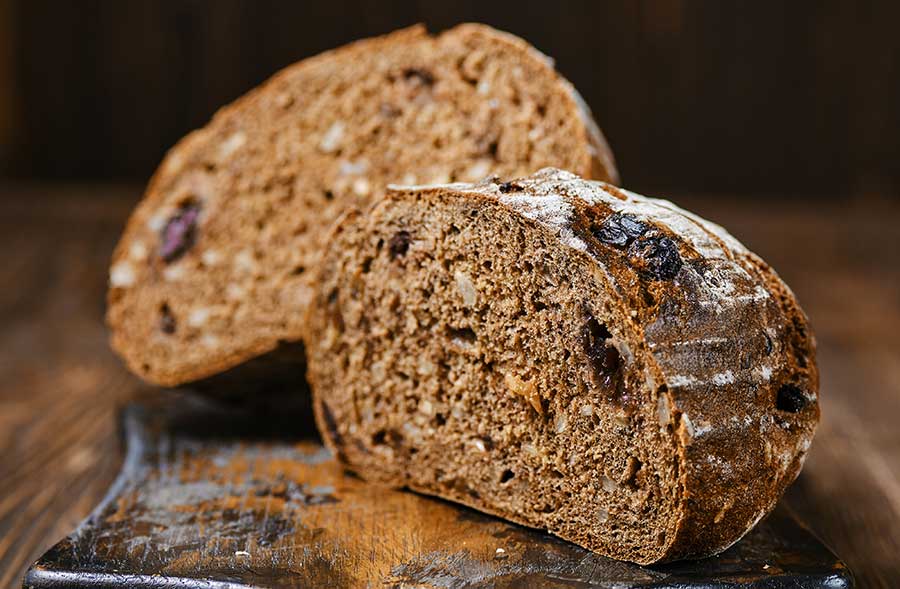

Good brown bread should be moist, flavourful, and have a hearty texture.
For best result use a combination of whole grain flours: maybe a blend of whole grain flours, such as whole wheat, rye, and cornmeal, to give the bread a complex flavour and texture.
Add flavourings: Use molasses, honey, or maple syrup to sweeten the bread and give it a rich, deep flavour. To add flavour and texture, you can add herbs, spices, or seeds to the dough.
Use buttermilk or yoghurt: These ingredients help to moisten the bread and give it a tender texture.
Experiment with rising times: Brown bread can take longer than white bread, so be patient and allow the dough to rise until it has doubled in size.
Shape the dough: Knead it gently and shape it into a loaf. Place it in a greased loaf pan and allow it to rise again before baking.
Bake the bread until it’s fully cooked: The bread is done when it sounds hollow when tapped on the bottom.
Overall, the key to making a loaf of good brown bread is to use quality ingredients and take the time to let the dough rise properly. You can make delicious and satisfying brown bread with patience and attention to detail.
There are many types of whole grain flours that you can use to make brown bread, including:
Whole wheat flour: This is a common type of whole grain flour made from grinding the entire wheat kernel, including the bran, germ, and endosperm. It has a nutty flavour and a slightly coarser texture than white flour.
Rye flour: This is made from ground rye grains and has a strong, distinct flavour and a slightly heavier texture than wheat flour.
Cornmeal: This is made from ground corn and has a slightly sweet, nutty flavour and a coarser texture.
Oat flour: This is made from ground oats and has a slightly sweet, nutty flavour and a soft, smooth texture.
Buckwheat flour: This is made from ground buckwheat and has a nutty, slightly earthy flavour and a somewhat coarser texture.
Depending on your preferences and what you have available, you can use any combination of these flours to make brown bread. Experiment with different combinations to find the flavour and texture that you like best.
There are many different flavourings that you can use to add depth and complexity to your brown bread. Some options include:
Molasses: This is a thick, dark syrup that is made from boiled-down sugarcane or beet juice. It has a rich, sweet flavour and can be used to sweeten and flavour the bread.
Honey: This is a sweet, sticky substance produced by bees from the nectar of flowers. It has a mild, sweet flavour and can be used to sweeten and flavour the bread.
Maple syrup: This is a sweet, amber-coloured syrup made from the sap of maple trees. It has a rich, sweet flavour and can be used to sweeten and flavour the bread.
Herbs: Fresh or dried herbs, such as rosemary, thyme, or basil, can add flavour and depth to the bread.
Spices: Ground spices, such as cinnamon, nutmeg, or allspice, can add warmth and depth to the bread.
Seeds: You can add seeds, such as sesame, poppy, or sunflower, to the dough or sprinkle them on top of the loaf before baking to add flavour and texture.
Choose flavourings that complement the other ingredients in the bread and that match your taste preferences. You can use one or a combination of these flavourings to add interest and depth to your brown bread.
Buttermilk and yoghurt are good for adding moisture and tenderness to brown bread. They can help to keep the bread from becoming too dense or heavy and give it a softer, more delicate texture.
Buttermilk is a thin, slightly sour milk made by adding bacteria to regular milk. It has a tangy flavour and can help to tenderize the bread dough.
Yoghurt is a thick, creamy product made by fermenting milk with bacteria. It has a tangy flavour and can also help to tenderize the bread dough.
To use buttermilk or yoghurt in your brown bread recipe, substitute it for an equal amount of regular milk or water called for in the recipe. The bread will have a softer, more tender texture as a result.
Bicarbonate (also known as baking soda) and yeast are both leavening agents used to help bread dough rise. However, they work in different ways and are used in various types of bread.
Bicarbonate of soda is an alkaline chemical that releases carbon dioxide gas when it reacts with an acidic ingredient, such as buttermilk or yoghurt. It is often used in bread recipes that only require a short rise, such as quick bread and some soda breads.
Yeast is a living microorganism that ferments the sugars in the dough and releases carbon dioxide gas, which causes the dough to rise. It is typically used in bread recipes that require a longer rising time, such as traditional yeast breads.
When choosing between bicarbonate of soda and yeast for your brown bread, consider the type of bread you want to make and the flavour and texture you are trying to achieve. If you want a bread with a softer, more delicate texture and a mild flavour, you may prefer to use bicarbonate of soda. If you want a bread with a more complex flavour and a denser, chewier texture, you may prefer to use yeast.
There are a few ways to tell when your brown bread is fully cooked:
Visual cues: The bread should be a deep, golden brown on the outside and feel firm to the touch.
Temperature: Insert a meat thermometer into the centre of the loaf. It should read at least 89°C, which indicates that the bread is fully cooked.
Sound: Tap the bottom of the loaf with your finger. If it sounds hollow, it is likely fully cooked.
Slicing: If unsure, you can slice into the loaf to check for doneness. The bread should be thoroughly cooked all the way through and not be doughy or undercooked in the middle.
Remember to allow the bread to cool for a few minutes before slicing, as it will continue to cook and firm up as it cools. If you cut it too soon, it may fall apart or be gummy in the middle.
Recipe for brown bread
Ingredients:
250 grams of whole wheat flour
250 grams of rye flour
250 grams cornmeal
5 grams of baking powder
5 grams of baking soda
5 grams salt
250 millilitres buttermilk
250 millilitres yoghurt
125 millilitres molasses
60 millilitres of vegetable oil
Instructions:
Preheat the oven to 180°C. Grease a 23×13-centimetre loaf pan and set aside.
In a large mixing bowl, combine the whole wheat flour, rye flour, cornmeal, baking powder, baking soda, and salt.
Whisk together the buttermilk, yoghurt, molasses, and vegetable oil in a separate mixing bowl.
Pour the wet ingredients into the dry ingredients and stir until just combined. The dough should be moist and slightly sticky.
Transfer the dough to the prepared loaf pan and smooth the top with a spatula.
Bake the bread for 50-60 minutes, until it is deep golden brown and sounds hollow when tapped on the bottom.
Allow the bread to cool in the pan for a few minutes, then turn it onto a wire rack to cool completely.
Slice and serve the bread warm, or store it in an airtight container for up to 3 days. You can also freeze it for up to 3 months. Enjoy!
